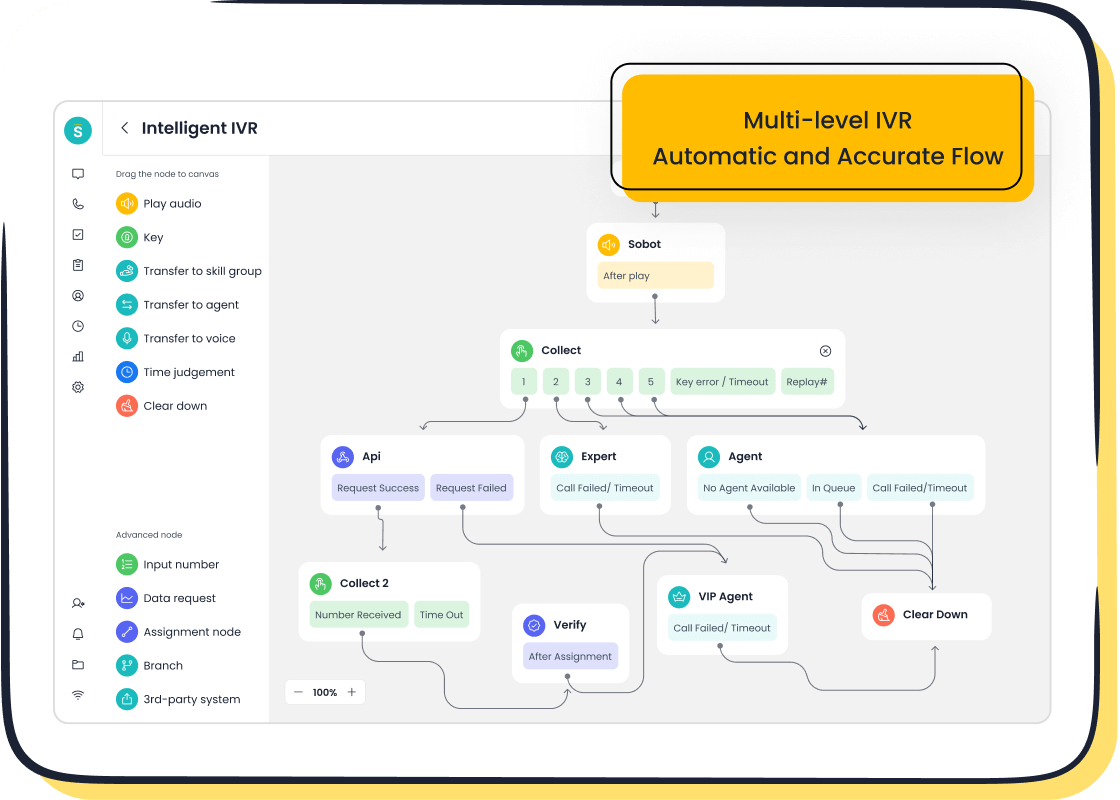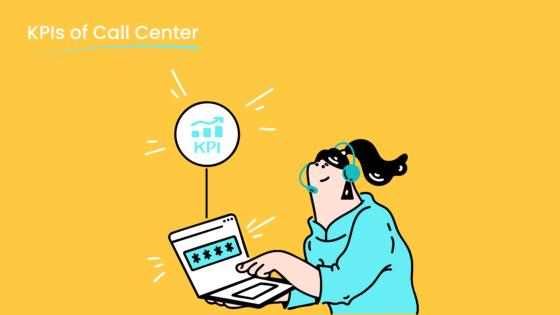Breaking Down Omnichannel for Customer Service and Multichannel

You might wonder how omnichannel and multichannel differ when it comes to customer service. Think of multichannel as a store with many doors—customers choose one to enter, but each door leads to a different room. Omnichannel for customer service works more like a single, connected space where you move freely without losing your place. This distinction matters because over 87% of merchants believe success depends on omnichannel, yet only 25% of contact centers use true omnichannel tools.

When you use Sobot AI, you give your customers a seamless experience, unlike the fragmented service that often comes with a traditional multichannel setup. Sobot call center solutions help you unify customer data and deliver consistent support, so your customers do not have to repeat themselves. Choosing the right approach can boost customer satisfaction and improve your customer support outcomes.
Omnichannel for Customer Service

What Is Omnichannel?
Omnichannel for customer service means you give your customers a unified experience across every channel. You connect email, chat, social media, and phone into one system. This way, customers do not have to repeat themselves or start over when they switch channels. You create a seamless journey, so every support interaction feels connected. Industry experts say 73% of retail customers now expect this kind of seamless experience. When you use omnichannel support, you break down silos and make sure every customer gets a personalized experience. You also help your team respond faster and keep track of every customer journey.
Did you know? Brands with strong omnichannel marketing strategies keep 89% of their customers, while those without lose many more.
Sobot Omnichannel Solution
Sobot offers a powerful omnichannel for customer service platform. You can manage all your support channels in one place. Sobot’s unified workspace brings together chat, voice, email, and social media. The Five-AI system powers Sobot’s platform, using advanced AI to automate tasks, suggest replies, and analyze data. You can connect Sobot with tools like Salesforce and Shopify. Sobot’s omnichannel support gives you over 300 reports, so you always know how your team is doing. You get a seamless, customer-centric experience that helps you deliver better support and drive customer engagement.
Benefits
When you use omnichannel support, you see real results. You improve customer satisfaction by 39% compared to multichannel. You also boost customer loyalty and increase conversion rates. Omnichannel marketing helps you track every customer journey and make smarter decisions. You save time with automation and reduce costs by using one system for all support needs. Sobot’s omnichannel for customer service platform helps you measure performance, spot trends, and respond quickly to customer needs. You give every customer a seamless, personalized experience that keeps them coming back.
Challenges
You may face some challenges when starting with omnichannel support. Integrating old systems and breaking down data silos can be hard. Training your team to use new tools takes time. You need to keep service quality high across every channel. Many businesses solve these problems by choosing platforms like Sobot that offer easy integration and strong training resources. With the right strategy, you can overcome these hurdles and deliver a seamless, unified experience for every customer.
Multichannel Customer Service

What Is Multichannel?
Multichannel customer service gives you many ways to connect with your customers. You can use email, phone, chat, SMS, or social media. Each channel works on its own. When you use multichannel support, your customers pick the channel they like best. You answer questions or solve problems on each channel separately. This approach is like a wagon wheel, where each spoke is a different channel. The channels do not share information, so your team may not see what happened on another channel.
Here is a table to help you see the main differences between multichannel and omnichannel support:
| Feature | Multichannel Support | Omnichannel Support |
|---|---|---|
| Definition | Multiple channels provided separately; channels do not share customer data. | Multiple channels integrated into a unified platform with shared customer data and conversations. |
| Customer Focus | Channel-centric; customers must use specific channels independently. | Customer-centric; customers can switch channels seamlessly with full context maintained. |
| Data Management | Data is siloed per channel; no centralized customer history. | Centralized data collection enables personalized and informed support. |
| Customer Experience | Disjointed; customers may need to repeat information when switching channels. | Seamless and consistent experience across all channels. |
| Setup Complexity | Easier and quicker to implement; less sophisticated technology required. | Requires more effort and sophisticated technology to unify channels and data. |
| Benefits | Provides multiple communication options and flexibility; easy to measure channel metrics. | Enhances customer satisfaction and loyalty through personalized, real-time communication and engagement. |
Sobot Voice/Call Center

Sobot Voice/Call Center gives you a strong multichannel support platform. You can manage inbound and outbound calls, chat, SMS, and tickets all in one place. The system uses intelligent IVR to route calls to the right agent. You get a unified workspace, so your team can see call details and customer information. Sobot Voice/Call Center supports global phone numbers, so you can reach customers anywhere. The platform also offers call recording, real-time monitoring, and AI-powered voicebots. These features help you improve customer engagement and make your support more efficient.
Sobot Voice/Call Center integrates with your CRM, so agents can access customer data while handling calls. You can use the cloud-based platform on mobile devices, making it easy for your team to work from anywhere. Many businesses choose Sobot for its stable system and high uptime. You can learn more about Sobot Voice/Call Center on the official website.
Pros and Cons
Multichannel marketing gives you flexibility. You can reach customers on the channels they prefer. The setup is usually faster and costs less than omnichannel. This makes multichannel support a good choice for small businesses or those just starting with digital support.
However, multichannel customer service has some limits. Each channel works alone, so your team may not see the full customer journey. Customers might have to repeat their information if they switch channels. This can lead to a disjointed experience and lower satisfaction. Studies show that 87% of customers feel frustrated when they have to repeat themselves across channels. Multichannel support also makes it harder to track overall performance, since data stays in separate silos.
Tip: If you want to improve customer engagement and provide a seamless experience, consider how your channels work together. Multichannel marketing is a good start, but moving toward integration can boost satisfaction and loyalty.
Key Differences
When you compare omnichannel and multichannel customer service, you see clear key differences in how each approach shapes the customer experience, handles integration, manages data flow, and impacts your support team. Understanding these differences helps you choose the right strategy for your business.
Customer Experience
You want your customers to feel valued and understood every time they reach out. Omnichannel customer experience connects all touchpoints, so your customers can start a conversation on one channel and continue on another without repeating themselves. For example, a customer might begin with a chatbot, then switch to a live agent, and the agent already knows the issue. This seamless transition creates a consistent experience and makes your customers feel heard.
In contrast, multichannel marketing gives your customers many ways to contact you, like phone, email, or chat. However, each channel stands alone. If a customer starts on email and moves to chat, they often have to explain their problem again. This can lead to frustration and a disjointed journey. Studies show that 87% of customers feel annoyed when they must repeat information across channels. Omnichannel marketing solves this by unifying the journey, leading to higher satisfaction and loyalty.
Note: Omnichannel customer service delivers a seamless, integrated experience, while multichannel often results in fragmented and repetitive interactions.
Integration
Integration is a major factor in the key differences between omnichannel and multichannel platforms. Omnichannel systems connect all your communication channels into one unified platform. This means your agents see every customer interaction in one place, no matter where it started. You get a holistic view of each customer, which helps you provide fast, personalized support.
Here’s a table to show how integration works in both approaches:
| Aspect | Omnichannel Customer Service Platform | Multichannel Customer Service Platform |
|---|---|---|
| Channel Integration | Channels are seamlessly connected and aggregated into a single platform, providing a unified system. | Channels operate independently, often requiring agents to manage multiple separate systems. |
| Customer Interaction View | Consolidates data from all channels to give agents a holistic view, preserving conversation context. | Interactions are disconnected; agents may lose context and customers repeat information. |
| Customer Experience | Consistent, cohesive, and personalized across all channels. | Less consistent; experiences can be fragmented and repetitive. |
| Data Handling | Centralized data collection enables intelligent routing and real-time analytics. | Data is scattered across channels, leading to inefficiencies and limited insights. |
| Agent Workflow | Agents can transition between channels without losing information. | Agents switch between tabs/windows, often copying and pasting customer context. |
With Sobot’s omnichannel solution, you can integrate chat, voice, email, and social media into one workspace. This makes it easy for your team to deliver a consistent experience and respond quickly to every customer.
Data Flow
Data flow is another area where you see key differences. Omnichannel platforms share customer information across all channels. When a customer contacts you, your agents can see their full history, including past conversations, purchases, and preferences. This unified data flow allows you to personalize every interaction and resolve issues faster.
Multichannel systems keep data in separate silos. Each channel stores its own information, so agents may not know what happened in another channel. This can slow down service and force customers to repeat themselves. Omnichannel marketing uses centralized data management, which leads to better insights, smarter campaigns, and a consistent experience for your customers.
For example, Sobot’s omnichannel platform gives you real-time analytics and a complete view of every customer. You can track trends, measure performance, and make data-driven decisions that improve your service.
Tip: Omnichannel strategies can increase customer lifetime value by 30% because they use unified data to create more personalized and effective support.
Team Impact
The structure and workflow of your support team also change depending on your approach. In a multichannel setup, your team manages each channel separately. Agents may handle only phone calls or only emails, and they often lack access to the full customer story. This can lead to repeated questions and slower resolutions.
Omnichannel support brings your team together. Agents use a unified workspace, so they can follow the customer journey across all channels. They can switch between chat, email, and phone without losing context. This improves productivity and helps your team deliver a consistent experience.
Here’s how team roles look in an omnichannel environment:
| Team Role | Responsibilities in Omnichannel Support |
|---|---|
| Customer Service Representative | Handles initial queries and basic support, with access to full customer history. |
| Support Agent | Solves complex issues, using unified data from all channels. |
| Team Leader | Oversees operations, ensures quality, and drives continuous improvement with real-time analytics. |
With Sobot’s omnichannel solution, your team can collaborate more easily and focus on delivering excellent customer service. You can train your agents to use new tools and workflows that support seamless communication and faster problem-solving.
Remember: Omnichannel communication syncs conversations, notes, and files across all channels, so your team always stays up to date.
Summary of Key Differences
- Omnichannel customer experience gives you a seamless, consistent experience across all channels, while multichannel marketing offers flexibility but can feel fragmented.
- Omnichannel platforms integrate all channels and data, making it easier for your team to provide fast, personalized support.
- Data flows freely in omnichannel systems, leading to better insights and smarter decisions.
- Your support team works more efficiently with omnichannel tools, improving both productivity and customer satisfaction.
If you want to deliver a consistent experience and build stronger relationships with your customers, omnichannel marketing is the way forward. Sobot’s solutions help you make this transition smoothly, giving you the tools you need for success.
Real-World Example: Sobot and Opay
Omnichannel in Action
You can see the power of omnichannel for customer service by looking at Opay’s story. Opay, a leading financial service platform, needed a way to manage customer interactions across many channels. Before using Sobot, Opay’s team struggled to keep up with customer requests on social media, email, and voice calls. Customers often had to repeat their issues when switching channels. This led to frustration and lower satisfaction.
Sobot’s omnichannel support changed the game for Opay. The platform brought all communication channels together in one place. Opay’s agents could now see every customer’s journey, no matter where it started. Sobot’s AI-powered chatbots handled common questions, so human agents could focus on complex cases. This seamless approach made it easy for customers to get help quickly and without repeating themselves.
Here is a table showing how Sobot’s omnichannel solution improved Opay’s operations:
| Impact Area | Improvement with Sobot's Omnichannel Solution for Opay |
|---|---|
| Customer Satisfaction Scores | Increased by over 30% through immediate multi-channel responses |
| Net Promoter Score (NPS) | Increased by over 35% via personalized promotions and better purchase experiences |
| Conversion Rates | Improved by over 15% through automated shopper journey management |
| Operational Efficiency | AI-driven automation resolved 83% of queries autonomously, reducing human agent workload |
| Cost Reduction | Operational costs significantly lowered due to automation |

Results
You can measure the impact of omnichannel for customer service by looking at the numbers. After Opay adopted Sobot’s omnichannel platform, customer satisfaction jumped from 60% to 90%. This 30-point increase shows how seamless support can make a real difference. Opay also saw a 20% drop in operational costs. Sobot’s AI chatbots resolved 83% of customer queries, which freed up agents and boosted efficiency by up to 40%. Conversion rates rose by 17%, and reconciliation errors dropped by 90%.
Sobot’s omnichannel support helped Opay deliver a consistent experience across every channel. Customers no longer had to repeat information. Agents worked faster and smarter. You can see how a unified platform leads to better results for both your team and your customers. When you choose omnichannel, you set your business up for higher satisfaction, lower costs, and a more seamless customer journey.
Choosing an Omnichannel Strategy
Assessing Needs
Before you start with an omnichannel strategy, you need to look at your business needs and resources. Ask yourself if you want to connect all customer contact points, like phone, email, social media, live chat, and even in-person support. You should check if your team can handle seamless transitions between channels, so customers never have to repeat information. Make sure you can access unified customer data across all platforms and keep a consistent brand voice. Look for real-time updates and the ability to scale as your business grows. Automation and AI can help with repetitive tasks and improve efficiency. You also need to see if your current systems, like CRM or helpdesk software, can integrate with a new omnichannel platform. Think about your biggest customer service pain points, the volume of inquiries, and your technical capabilities. This careful assessment helps you decide if an omnichannel strategy will boost your customer experience and support your growth.
Tip: A customer-centric approach means putting your customers’ needs first at every touchpoint.
Implementation Steps
You can follow these steps to put your omnichannel strategy into action, especially with a solution like Sobot:
- Review your current communication channels and spot any gaps.
- Build a unified customer data foundation by connecting data from all sources.
- Integrate all channels—email, chat, phone, social media—into one platform for a single customer view.
- Use AI-powered automation and chatbots, like those from Sobot, to handle routine questions and provide 24/7 support.
- Set up intelligent routing so customers reach the right agent quickly.
- Monitor key metrics, such as customer satisfaction and response times, to track progress.
- Train your team to use new tools and workflows.
- Make sure your new omnichannel tools work well with your existing CRM and marketing systems.
Sobot’s omnichannel platform makes these steps easier by offering seamless integration, AI-driven automation, and a unified workspace for your team.
Tips for Success
To make your omnichannel strategy work, start by mapping your customer journey. Find gaps and friction points. Break down data silos so agents can see all customer information in real time. Train your team to handle different channels and use a unified agent desktop. Keep your messaging consistent across every channel. Use automation for repetitive tasks and set up chatbots for common questions, but always give customers a way to reach a human agent. Regularly check your key performance indicators, like Net Promoter Score (NPS) and Customer Satisfaction (CSAT), to measure success. Keep improving your strategy by listening to feedback and updating your tools.
Note: Companies that use omnichannel analytics can get a 360° view of customer interactions and improve engagement. Learn more about omnichannel analytics.
With the right omnichannel strategy, you can deliver a seamless customer experience and set your business up for long-term success.
You can see the key differences between omnichannel and multichannel customer service in the table below:
| Aspect | Multichannel | Omnichannel |
|---|---|---|
| Focus | Channel-centric | Customer-centric |
| Experience | Fragmented | Seamless and consistent |
| Data Management | Siloed | Unified and integrated |
Choosing the right approach helps you reach your business goals. Sobot’s omnichannel solutions give you a unified platform, 24/7 support, and high customer satisfaction. Explore Sobot’s offerings or contact the team for more information.
FAQ
What is the main difference between omnichannel for customer service and multichannel?
Omnichannel for customer service connects all your channels into one system. You get a seamless experience. Multichannel gives you many channels, but each works alone. Studies show 73% of customers want seamless support across channels. Source
How does Sobot help with omnichannel for customer service?
Sobot gives you a unified workspace. You can manage chat, voice, email, and social media in one place. Sobot’s AI automates tasks and helps your team respond faster. You improve customer satisfaction and reduce costs with Sobot’s omnichannel for customer service platform.
Can I start with multichannel and move to omnichannel for customer service later?
Yes, you can. Many businesses begin with multichannel support. When you want a better customer experience, you can upgrade to omnichannel for customer service. Sobot makes this transition easy with simple integration and training.
Why does omnichannel for customer service improve customer satisfaction?
You give customers a seamless journey. They do not repeat information when switching channels. Sobot’s omnichannel for customer service platform tracks every interaction. You see higher satisfaction scores and more loyal customers. For example, Opay increased satisfaction from 60% to 90% after using Sobot.
What channels can I connect with Sobot’s omnichannel for customer service solution?
You can connect voice, chat, email, social media, and WhatsApp. Sobot’s omnichannel for customer service solution supports all major channels. You manage everything in one place. This helps you deliver fast, consistent support every time.
See Also
Comprehensive Overview Of Omnichannel Call Center Platforms
Step-By-Step Process For Deploying Omnichannel Contact Centers
How To Excel At Live Chat Within Retail Businesses
Expert Strategies For Live Chat In Customer Service
Artificial Intelligence Agents Transforming Customer Support Services